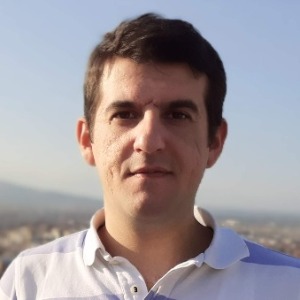Mar 11, 2020
Version 2
ATR FTIR Spectoscopy of Aqueous Cell Cultures V.2
- Emrulla Spahiu1,
- Senol Dogan2,
- Jörg Schnauß2,
- Mayda Gursel1,
- Feride Severcan3
- 1Middle East Technical University;
- 2Leipzig University, Faculty of Physics and Earth Sciences, Peter Debye Institute for Soft Matter Physics;
- 3Department of Biophysics, Faculty of Medicine, Altinbas University

Protocol Citation: Emrulla Spahiu, Senol Dogan, Jörg Schnauß, Mayda Gursel, Feride Severcan 2020. ATR FTIR Spectoscopy of Aqueous Cell Cultures. protocols.io https://dx.doi.org/10.17504/protocols.io.bdidi4a6
License: This is an open access protocol distributed under the terms of the Creative Commons Attribution License, which permits unrestricted use, distribution, and reproduction in any medium, provided the original author and source are credited
Protocol status: Working
We use this protocol and it's working
Created: March 11, 2020
Last Modified: March 11, 2020
Protocol Integer ID: 34085
Keywords: atr, ftir, infrared, spectroscopy, aquous, cell culture, data processing, PCA, spectra,
Abstract
ATR-FTIR Spectroscopy of aqueous cell culture samples is explained step-by-step. Infrared spectra acquisition, processing and analysis is included briefly.
Spectra acquisition
Spectra acquisition
Arrange the temperature of the working environment to 25 °C
Clean the ATR crystal using a cellulose wipe and water-ethanol-water sequence.
Scratching the crystal surface must be avoided.
Equipment
ATR FTIR
NAME
Spectroscope
TYPE
Perkin Elmer Inc., Norwalk, CT, USA
BRAND
X
SKU
Leave the crystal to air-dry
Select “Scan and Instrument Setup” and input sample name, scan range (650-4000 cm-1), scan number (128), and spectral resolution (2 cm-1). This step needs optimization for specific sample being used.
Software
Spectrum One
NAME
Perkin Elmer
DEVELOPER
Scan the backgroung spectrum to overcome the probable atmospheric interference that can be triggered by H2O and CO2 molecules present in the air, subtracted automatically by the software.
Additionally, record PBS as sample (subtract this manually from each spectrum)
This eliminates interference of PBS and flattens the water band located around 2125 cm -1
Put 1 µL cell samples and let to dry with a mild N2 flux for 00:05:00 . This allows cells to settle on the crystal.
5m
Scan the sample. Process takes about 00:07:00 to finish.
As the scanning process goes on, one must be sure that the quality check sign is everytime green.
7m
Scan each sample under the same conditions in three independent scans (the average constitutes a replicate n). Replicates (n=5) are used in data analysis.
This minimizes intra-sample variability and eliminates possible variation that might arise from experimental conditions.
Spectral pre-processing
Spectral pre-processing
The avarage of triplicates is taken manually.
Software
Spectrum One
NAME
Perkin Elmer
DEVELOPER
13-point Savitzky-Golay smoothing
Baseline correction at 3800-2750-1800-900 cm-1points.
Principal Component Analysis (PCA)
Principal Component Analysis (PCA)
Import spectra as data file into
Software
Unscrambler
NAME
Camo, NO
DEVELOPER
Define the data sets to 3000-650 cm-1region.
Make the PCA Model.
Define the regions with high variation using the Loadings plots.
Check how the replicates are grouping and if there are outliers in Scores plots.
Spectral Calculations
Spectral Calculations
Peak labelling can be done automaticaly. For increased precision we measured manually:
Measure the center of weight of each band. Read the frequency.
Compare the peaks you obtained, to the literature:
CITATION
Make an excel file of your peaks and their assignment to the functional groups.
For side-peak band assignment, the second derivative spectrum is used.
Concentration studies are carried out by integrating the curves under the peaks.
For conformational alteration studies, bandwidth measurements are done manually using the 75% height of the peaks.
Citations
Step 16
Zanyar Movasaghi, Shazza Rehman, and Ihtesham ur Rehman. Fourier Transform Infrared (FTIR) Spectroscopy of Biological Tissues
10.1080/05704920701829043